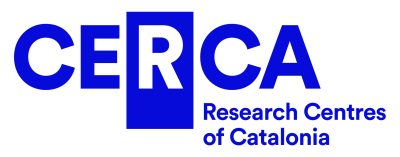
The domus, the Roman house, will be the subject of study and analysis at the 6th International Conference on Archaeology and Ancient World Tarraco Biennal, taking place on November 23 and 24 at the Catalunya Campus of the Rovira i Virgili University in Tarragona.
The meeting will provide a platform to present the joint research projects that the Roman provincial capitals—Mérida, Córdoba, Cartagena, and Tarragona—are currently developing.
Over the course of two days, researchers from universities in Murcia, Alicante, Córdoba, Seville, Braga (Portugal), and Pescara (Italy), as well as from the URV and ICAC-CERCA, will elaborate on models of domestic architecture in the Mediterranean region.
The conference was introduced last Thursday, November 16, with Joaquín Ruiz de Arbulo, Professor of Archaeology at the URV and researcher at ICAC-CERCA, and Josep Maria Palet, Director of the Catalan Institute of Classical Archaeology (ICAC-CERCA).
Ruiz de Arbulo emphasized the significance of the Roman house in understanding “what everyday life was like, social organization, ways of living, and rituals between the 2nd century B.C. and the 4th century A.D.,” as well as aspects like decoration, flooring, and mural paintings.
In Tarragona, no complete domus has been preserved because the majority were in Part Baixa (lower part), which was urbanized in the 19th century. However, we have found partial and small elements that help us explain what these houses were like, Ruiz de Arbulo.
Palet highlighted that the scientific meeting once again positions Tarragona as the “international capital of classical archaeology” and has praised the collaborative efforts of all institutions and entities associated with heritage that participate in the scientific committee of Tarraco Biennal.
The entire program of the event can be viewed on the Tarraco Biennal conference website.
The Tarraco Biennal Conference is an initiative that was launched in 2012 by the Fundación Privada Mutua Catalana with the aim of pointing Tarragona as the hub for research and scientific studies in archaeology. Currently, the direction of the conferences is overseen by the URV and the ICAC, within a scientific committee composed of all the city’s institutions related to archaeology and heritage: Museu d’Història de Tarragona, Museu Nacional Arqueològic de Tarragona (MNAT), Reial Societat Arqueològica Tarraconense, Departament de Cultura de la Generalitat de Catalunya, Arquebisbat de Tarragona.
The current edition is sponsored by Fundación Privada Mutua Catalana, the City Council of Tarragona, Port de Tarragona, and FIATC Seguros entity.

The Catalan Institute of Classical Archaeology (ICAC-CERCA) is a CERCA center established as a consortium in 2003 by the Generalitat de Catalunya and the Rovira i Virgili University. It is a Catalan institution with an international scope, at the forefront of research and conservation of archaeological heritage. We are CERCA!






